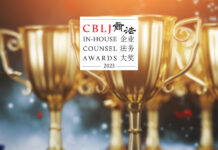Bankruptcy protection extends a lifeline to an enterprise from the time it experiences operational difficulties until it is finally wound up, but in general it is difficult for such an enterprise to turn things around on its own. Through acquisition by a quality enterprise, not only can the enterprise in bankruptcy protection be given a shot of adrenaline, but more importantly, the industrial structure can be optimised, resulting in a better allocation of resources and an enhancement in the competitiveness of the quality enterprise.

Partner
Zhonglun W&D Law Firm
However, due to information asymmetry, under an equity acquisition, the occurrence of contingent debts and tax risks make the recovery of the enterprise in bankruptcy protection impossible, and can also drag the acquiring enterprise into an unpredictable predicament. If an asset acquisition is opted for, it is impossible to obtain the qualifications or licences, and the acquiring enterprise will find it fails to achieve its objectives, and in some instances will additionally be required to bear management risks. Furthermore, pursuant to relevant tax regulations, enterprise income tax will be levied on the difference between the forgiven debts of the debtor in bankruptcy protection and the tax base as enterprise income, and if the debtor is forgiven huge liabilities, just the income tax will make the earliest recovery by the enterprise in bankruptcy protection difficult.
Core significance
The core significance of asset-backed securitisation is “bankruptcy remoteness”. If asset-backed securitisation is brought into the process of acquiring an enterprise in bankruptcy protection, the risks borne by the acquiring enterprise may be reduced and the operational and funding pressures on the acquiring enterprise, and the enterprise in bankruptcy protection, can be reduced through the creation of financial instrument financing, providing ample time for the success of the corporate transplant.
Asset-backed securitisation is a structured mode of financing whereby, through an asset pool – usually with a special purpose company and special purpose trust serving as the media for the creation and management of the asset pool – one or more types of low liquidity and fragmented property are injected into the pool and securitised, and then sold and realised.
In the China Securities Regulatory Commission’s Administrative Provisions for the Asset-Based Securitisation Business of Securities Companies and the Subsidiaries of Fund Management Companies (announcement No. 49), the asset-backed securitisation business is defined as “the business activity of using the cashflow generated by the underlying assets as repayment support, enhancing credit rating through structuring and offering asset-backed securities on this basis”.
Defining underlying assets
Genuine transaction basis. This mainly means that genuine sale is the principal mode of transfer of the underlying assets. Additionally, as regulations do not stress that the underlying assets must be completely separated from the original rights holder, limited only to “influencing the establishment of dedicated plans”, it is not a full-out genuine sale. The intent is to avoid the fraudulent increase of the underlying assets through various means, such as the fraudulent issuance of value-added tax invoices, forging of trade contracts, etc.
Fair transaction consideration. Fair transaction consideration is mainly for the purpose of protecting the interests of creditors after “bankruptcy remoteness”, with the intent being to avoid the sponsor delaying or evading performance of its debt obligations toward, and deceiving, its creditors.
Independence, foreseeability, sustainability and stability of cashflow. The basis for the generation of a cashflow is “specifiable property rights or property” and the generation of the cashflow is “independent”, which seemingly is to be interpreted as the generation of the cashflow coming solely as “autonomous realisation” of the underlying assets, not through reliance on operations. However, taking into consideration other regulations, underlying assets that depend on “business acts” to generate cashflow should also be included.
Currently, the types of underlying assets are limited to “property rights, such as enterprise receivables, lease claims, credit assets, right to benefit from a trust, etc.; immovable property, such as infrastructure, commercial property, etc.; or rights to benefit from such immovable property, as well as other property and property rights approved by the CSRC”. In contrast to other types of underlying assets, the right to benefit from a trust is more flexible and this is also where the significance of combining asset-backed securitisation business and trust business lies and also what creates the opening for combining the acquisition of enterprises in bankruptcy protection and asset-backed securitisation.
Trust design
Based on the legal status of the right to benefit from trusts established by China’s Trust Law and system flexibility, money, equity, claims, rights in rem, contracted right to benefit from specific assets as well as other property rights permitted by law may be used to establish a trust and create rights to benefit therefrom.

Lawyer
Zhonglun W&D Law Firm
The application of pre-bankruptcy trusts designed for the purpose of protecting creditors has a long history, the most famous being the 1968 Barclays Bank v Quistclose Investments case in the UK. There are also precedents for post-bankruptcy property trusts, e.g. trusts for the management of bankruptcy estates. However, directly using a trust to participate in an acquisition once the bankruptcy protection procedure has been initiated has been termed an “extremely imaginative business type” by industry circles. Perhaps because of the impracticability of the law, the difficulty of the tax operations and complexity of the design it is not yet mature in practice.
Accordingly, the conservative method of designing a trust to acquire an enterprise in trust bankruptcy is to carry it out after completion of the acquisition. “Duly use the increment, revitalise the stock” is the important policy of the central government in the current adjustment of the economic structure. A quality enterprise, by treating an enterprise in bankruptcy as assets in stock and flexibly using the method of post-trust asset-backed securitisation to raise funds and offload risks after it has acquired such enterprise, can ultimately strengthen itself and achieve a win-win situation for the creditors, itself, the trust enterprise and the enterprise in bankruptcy protection.
Of course, the process of post-trust asset-backed securitisation is relatively complex and the period of time can be long. However, considering the long-term benefits of industrial development, proceeding in this manner is without a doubt forward-looking and strategic, and in future it is certain that more incentive and supporting policies will be issued to increase its benefits and value.
Wu Jian is a partner and Guo Shujing is a lawyer at Zhonglun W&D Law Firm
19/F, Golden Tower
1 Xibahe South Road, Chaoyang District
Beijing, 100028, China
Tel:+86 10 6440 2232
Fax:+86 10 6440 2915/2925
E-mail:wujian@zlwd.com
guoshujing@zlwd.com
www.zhonglunwende.com





















